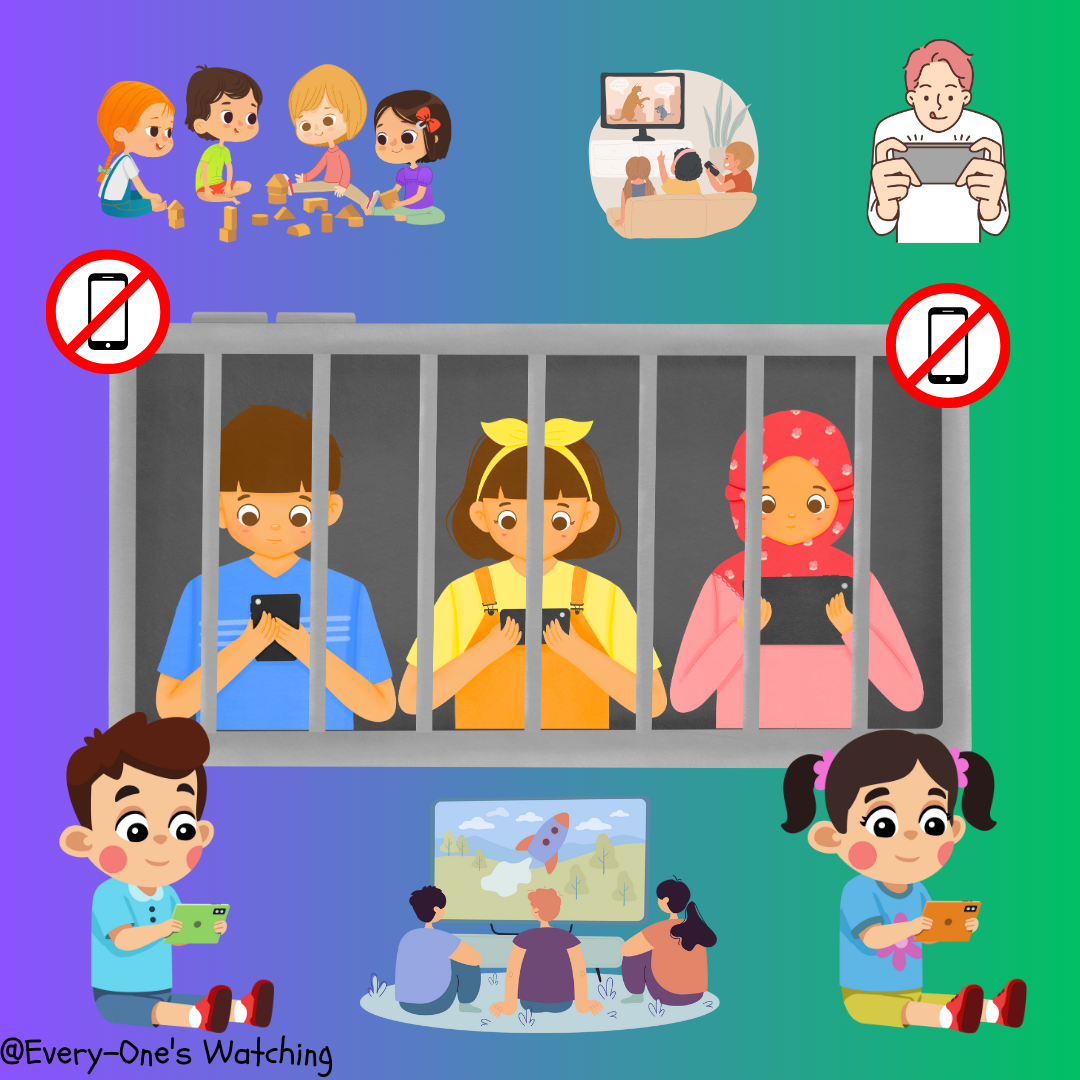How to Deal With and Limit Screen Time for Children: A
Guide for Parents
In today’s digital age, screens are everywhere. From tablets
and smartphones to televisions and computers, it’s almost impossible to escape
their glowing attractiveness. While screens can offer educational content and
entertainment, excessive screen time for children is a growing concern for many
parents. Striking the right balance is crucial for their physical, mental, and
social well-being.
Here’s how you can effectively deal with and limit screen
time for your children—without losing your sanity.
1. Understand the Impact of Screen Time
Before setting limits, it’s essential to understand why
managing screen time is important. Excessive screen time has been linked to a
range of issues, including:
- Sleep
Disruption: Blue light from screens can interfere with your child’s
sleep patterns, making it harder for them to fall asleep and stay asleep.
If your kid is suddenly up at 3 a.m. discussing the complexities of
Minecraft, this might be why.
- Behavioural
Issues: Prolonged exposure to screens, especially content that is
violent or overstimulating, can lead to behavioural problems, including
irritability and aggression. Translation: You might start noticing your
sweet child turning into a tiny, tech-fuelled Hulk.
- Reduced
Physical Activity: Time spent on screens often replaces physical
activity, contributing to sedentary lifestyles, which can lead to obesity
and related health issues. Remember when “exercise” meant running around
the yard instead of running a digital farm? Good times.
- Impacted
Social Skills: Overreliance on screens for entertainment can limit
opportunities for face-to-face interactions, affecting the development of
social and communication skills. Let’s not raise a generation that thinks
“LOL” is a valid verbal response in real-life conversations.
2. Set Clear and Consistent Boundaries
One of the most effective ways to limit screen time is by
setting clear and consistent boundaries. Here’s how:
- Create
a Schedule: Designate specific times during the day when screen time
is allowed, such as after homework or during weekends. Consistency helps
children understand and accept these limits. Besides, it’s easier to say,
“Sorry, screen time’s over!” when you have a schedule to back you up.
- Screen-Free
Zones: Establish certain areas in your home where screens are not
allowed, such as bedrooms or during family meals. This encourages children
to engage in other activities and promotes family bonding. Plus, it
ensures you won’t find a tablet under the dinner table during “family
time.”
- Use
Parental Controls: Most devices and apps offer parental controls that
allow you to monitor and limit screen time. Utilize these tools to help
manage your child’s usage without constant supervision. Think of it as
being a superhero with the power to control Wi-Fi—kids will never see it
coming.
3. Encourage Alternative Activities
To successfully limit screen time, it’s important to provide
your children with alternative activities that are engaging and fulfilling.
- Promote
Physical Activity: Encourage your children to participate in sports,
outdoor play, or other physical activities that they enjoy. Regular
exercise not only keeps them healthy but also reduces the time they spend
in front of screens. Bonus: It also helps burn off that endless energy
that makes bedtime battles more epic than they should be.
- Foster
Creativity: Provide materials and opportunities for creative
activities, such as drawing, crafting, building with blocks, or playing
musical instruments. These activities stimulate the mind and offer a break
from digital devices. Who knows? Your living room might double as the next
art gallery… or a construction site, depending on their creative mood.
- Family
Time: Plan regular family activities that do not involve screens, such
as board games, cooking together, or going on nature walks. These
activities strengthen family bonds and teach children that fun doesn’t
always come from a screen. Plus, it’s a great chance to show off your
Monopoly skills—or to discover just how competitive your kids really are.
4. Model Healthy Screen Habits
Children often mimic the behaviour of their parents. If they
see you constantly glued to a screen, they are likely to follow suit. Model
healthy screen habits by:
- Limiting
Your Own Screen Time: Be mindful of how much time you spend on your
devices, especially when around your children. Set an example by
prioritizing face-to-face interactions and non-digital activities. You
might even rediscover the joy of reading an actual book…with pages!
- Using
Screens Purposefully: When you do use screens, explain to your
children why you’re doing so, whether it’s for work, research, or a
specific task. This helps them understand the difference between
productive screen time and mindless scrolling. It’s like letting them in
on the secret that not all screen time is created equal.
5. Communicate the Importance of Balance
Instead of simply imposing rules, explain to your children
why it’s important to limit screen time. Discuss the benefits of a balanced
lifestyle, including time for physical activity, learning, socializing, and
rest. When children understand the reasons behind the rules, they are more
likely to follow them willingly. And if you can manage to throw in a superhero
analogy, even better—“Just like Batman needs balance between Bruce Wayne and
his caped crusader life, you need balance between screens and everything else!”
6. Be Flexible and Adaptable
While it’s important to have rules, it’s equally important
to be flexible. There may be times when screen time needs to be adjusted, such
as during vacations, rainy days, or when a child is sick. The key is to
maintain a balance and return to regular routines once the situation allows.
After all, even the best-laid plans sometimes need a little wiggle
room—especially when it’s raining cats and dogs outside, and you’ve run out of
indoor activities.
7. Monitor Content, Not Just Time
While limiting screen time is crucial, it’s also important
to pay attention to what your children are watching or playing. Ensure that the
content is age-appropriate, educational, and aligns with your family’s values.
Co-viewing or playing games together can be a great way to monitor content
while spending quality time with your child. Plus, you might just learn what
all the fuss is about with that game they can’t stop talking about—just be
ready for a lot of enthusiastic explanations!
Conclusion
Limiting screen time for children is a challenge that many
parents face, but it’s an important step in ensuring their overall well-being
and yours! By setting clear boundaries, encouraging alternative activities, modelling
healthy habits, and maintaining open communication, you can help your children
develop a balanced relationship with technology. Remember, the goal isn’t to
eliminate screens entirely but to guide your children in using them responsibly
and purposefully. With patience, a dash of humour, and a little creativity, you
can foster a healthy, screen-balanced lifestyle that benefits your entire
family.








